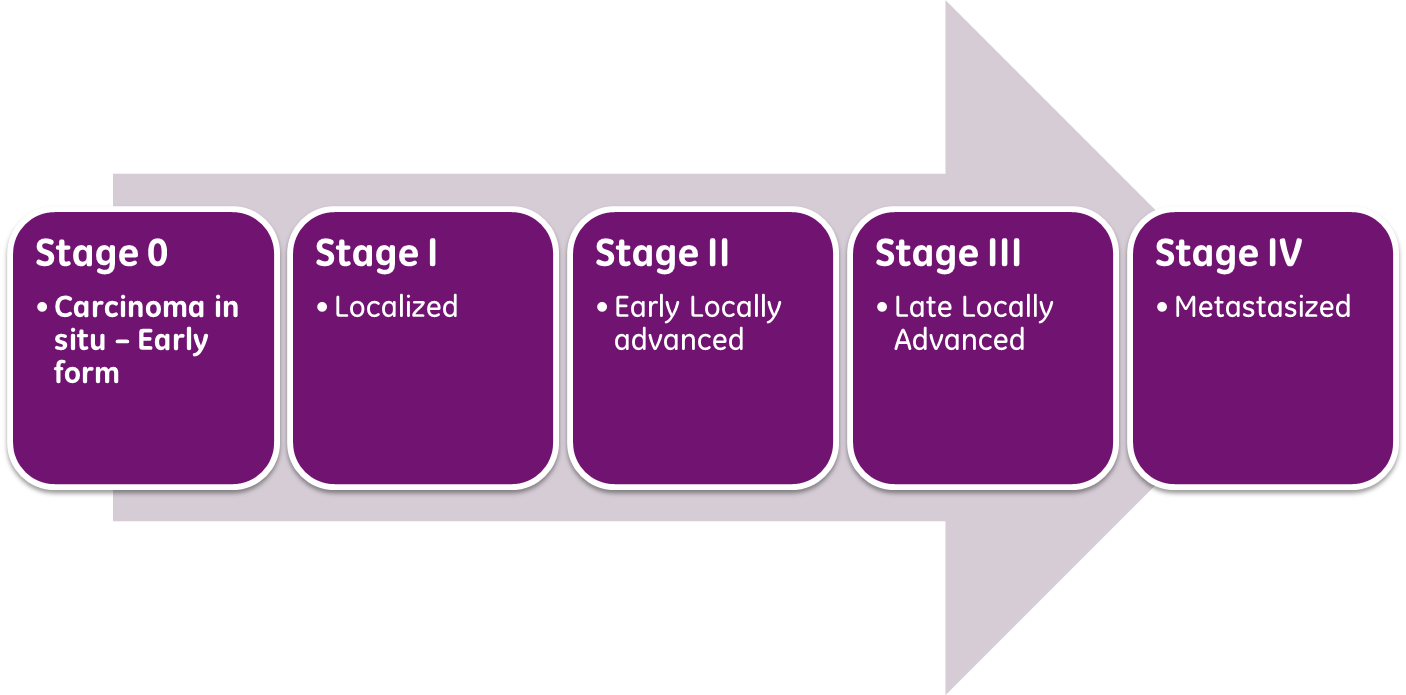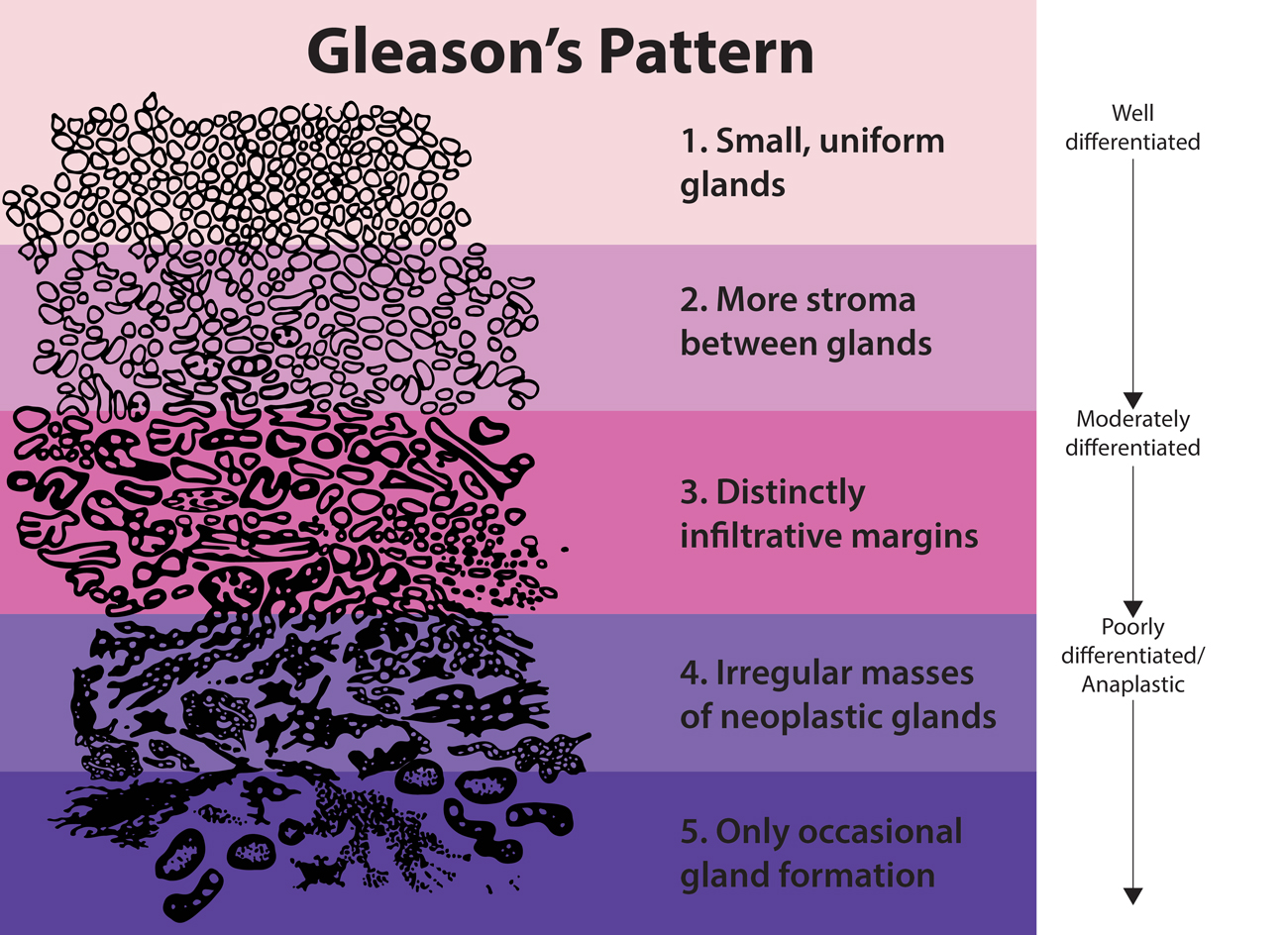Difference Between Staging and Grading
Staging is the way that doctors assess cancer based on the size of tumors and if the cancer has spread to other parts of the body. Grading is a classification scheme that is based on how much differentiation cancer cells have undergone.

What is Staging?
Definition:
Staging is a process in which doctors evaluate cancer to see the size of a tumor and also to determine where the cancer is in the body.
What the stages are:
There are several systems of staging when it comes to cancer and classifying tumors. Generally, the stage will have a number from 0 to 4 associated with it but exactly what this means does change slightly according to what type of cancer is diagnosed. There are three main ways in which cancer is classified when it is staged according to the TNM method of staging. The first way is related to the tumor itself (T), then the presence of cancerous cells in the lymph nodes (N) and finally if metastasis is noted (M). With the T levels, Tis is cancer that is in situ, while T0 is no primary tumor is evident. The values T1 to T4 are used to indicate the size of the tumor. The degree of spread into the lymph nodes is indicated by N1 to N4. The value M0 indicates no metastasis while M1 shows metastasis is present.
How staging is done:
Various scans and biopsies can be done, including CT scans, PET, ultrasound, and MRIs. The biopsy is the procedure in which a piece of a tumor or suspected cancerous tissue is removed from the body and sent to a pathologist for examination. Often the physicians also biopsy and examine the lymph nodes of the body to evaluate if the cancer has spread from the original site. Cancer that has spread beyond the initial site is said to have metastasized.
Impact on treatment:
Staging of cancer is a useful way for doctors to determine what the best and most appropriate form of treatment is for a particular patient since this may be different for cancer at stage 1 versus stage 4. The best type of treatment, though, will often vary also based on the type of cancer in addition to the stage that it is classified to be in.

What is Grading?
Definition:
Grading is a system that is used to describe the level of abnormality of cancerous tumor cells. It can be used as a way to assess the rate at which cancer is likely to grow.
What the grades are:
The grades are X and levels 1 to 4. Grade level X is when the cells are cancerous but a grade cannot be determined. The lowest grade that can be determined is G1, in which the cells of cancer are highly differentiated and not that abnormal and look very much like healthy cells of the body. The intermediate level is G2 where cells are not as differentiated. The high grade levels are both 3 and 4 in which the cells cannot be differentiated easily. A cancer that is assigned a high grade is one that in all likelihood will grow fast, while a cancer at a very low grade will grow slowly.
How grading is done:
The grade of each particular type of cancer is determined by taking tissue during a biopsy and examining it under a microscope. The pathologist is able to examine the individual cells of cancer and then classify these cells as being poorly or well-differentiated, or not differentiated at all. The appearance of these cancerous cells gives the pathologist an idea of how quickly the cancer is likely to progress and spread. The tissue sample may also be stained in various ways in order to better see the individual cells.
Impact on treatment:
It is important for an oncologist to know what grade a particular cancer is in as this allows for them to plan for the correct treatment option. A low-grade cancer may require a different and less aggressive treatment plan than a high-grade cancer.
Difference between Staging and Grading
Definition
Staging is the system of classification used in which a doctor evaluates the size of a cancerous tumor and degree of spread of cancer in the body. Grading is a system of classification in which cancerous cells are evaluated for the amount of abnormality present.
Names of the categories
Staging uses the TNM system in which T represents tumors, N represents lymph nodes, and M represents metastasis. Grading categories all start with the letter G and a number or an X.
What the categories mean
In staging: T0 indicates that no tumor has been found, Tis is a tumor in situ, and T1 to T4 are increasing sizes of the tumor. N is assigned a letter from 1 to 4 according to spread to the lymph nodes. M is used to show if metastasis has occurred. In grading, the cancer may be not graded (GX), or graded according to cell differentiation, with G1 being the most differentiated and normal looking and G4 being undifferentiated and abnormal- looking.
Microscopic features
Staging is not concerned with the microscopic appearance of cells while grading is concerned with the microscopic appearance of cells.
Tumors
Staging is concerned with the tumors while grading is concerned with the cells.
Table comparing Staging and Grading

Summary of Staging Vs. Grading
- Staging and grading are both classification schemes that doctors can use to evaluate the level of severity of cancer.
- Staging is a method of classification concerned with the size of a tumor and whether or not the cancer has spread to distant lymph nodes.
- Grading is a type of classification that looks at the microscopic features of cancer cells and determines the morphological appearance and thus extent of differentiation.
- Difference Between Rumination and Regurgitation - June 13, 2024
- Difference Between Pyelectasis and Hydronephrosis - June 4, 2024
- Difference Between Cellulitis and Erysipelas - June 1, 2024
Search DifferenceBetween.net :
Leave a Response
References :
[0]American Cancer Society “Cancer Staging”. American Cancer Society, 2019, https://www.cancer.org/treatment/understanding-your-diagnosis/staging.html
[1]Ludwig, Joseph A., and John N. Weinstein. "Biomarkers in cancer staging, prognosis and treatment selection." Nature Reviews Cancer 5.11 (2005): 845.
[2]University of Rochester Medical Center. “Grading and Staging of Cancer.” University of Rochester Medical Center, https://www.urmc.rochester.edu/encyclopedia/content.aspx?contenttypeid=85&contentid=p00554
[3]Image credit: https://commons.wikimedia.org/wiki/File:Gleasonscore.jpg
[4]Image credit: https://commons.wikimedia.org/wiki/File:Cancer_stages.png
